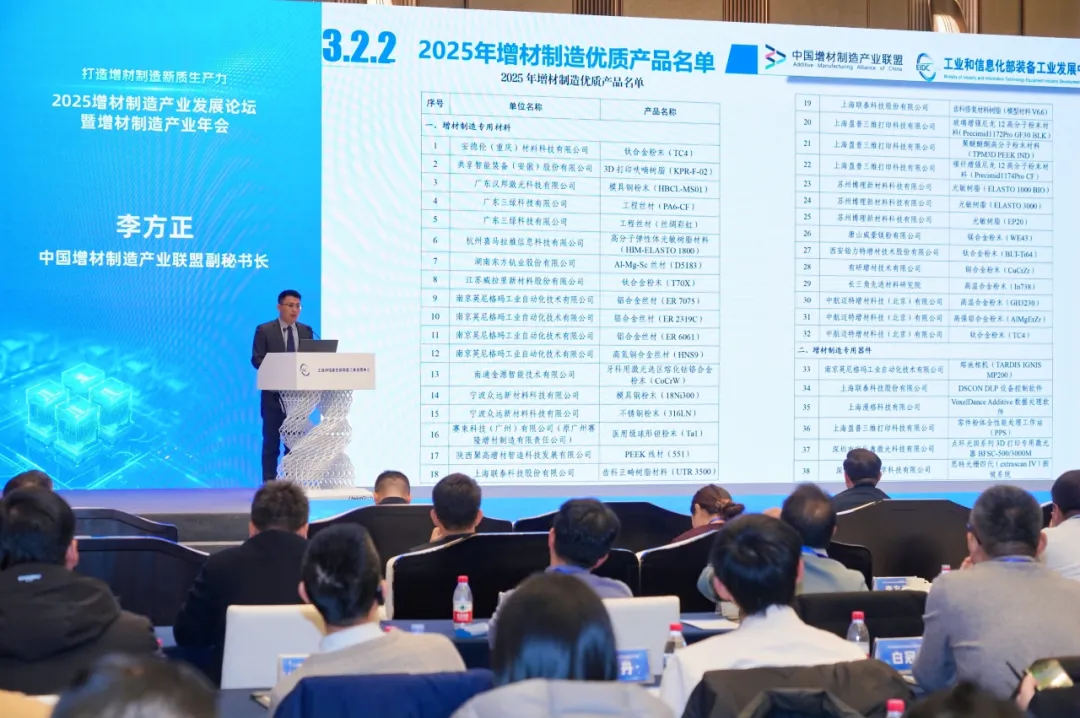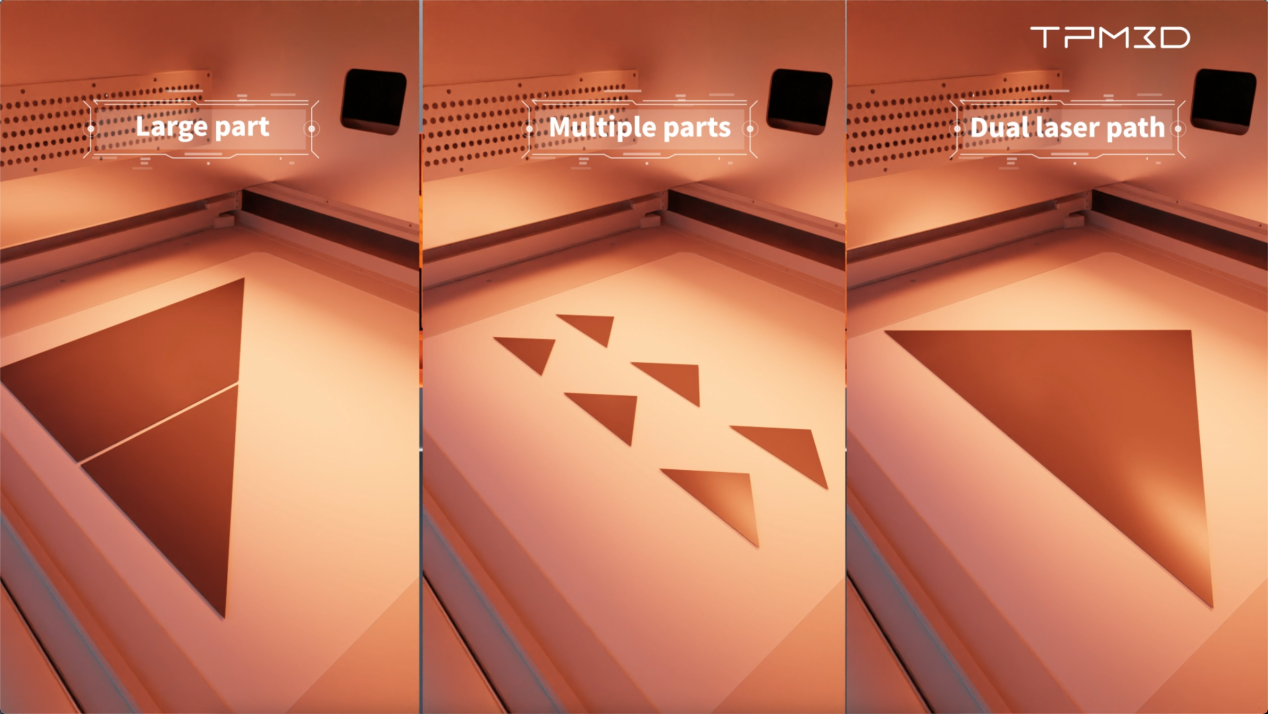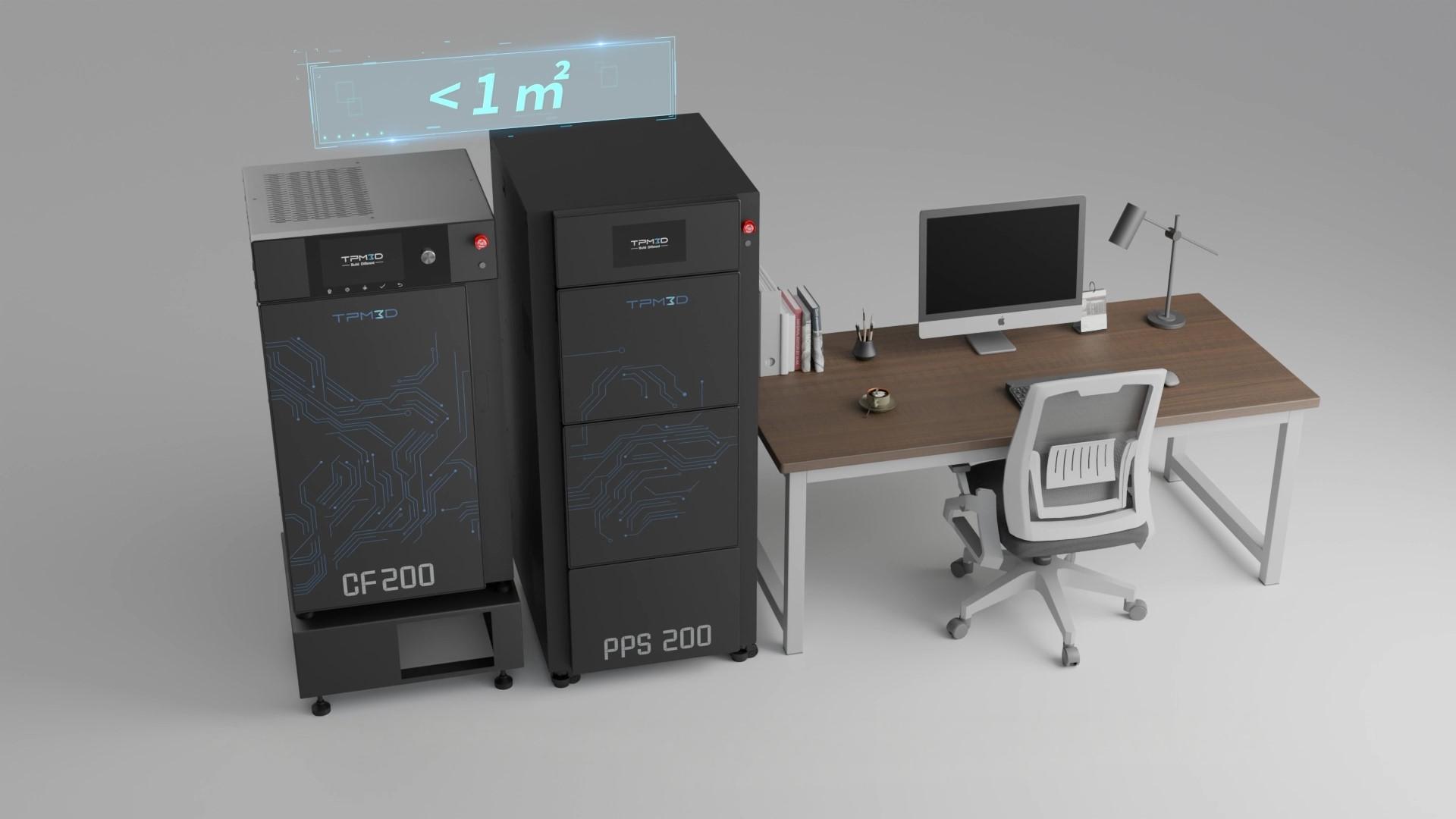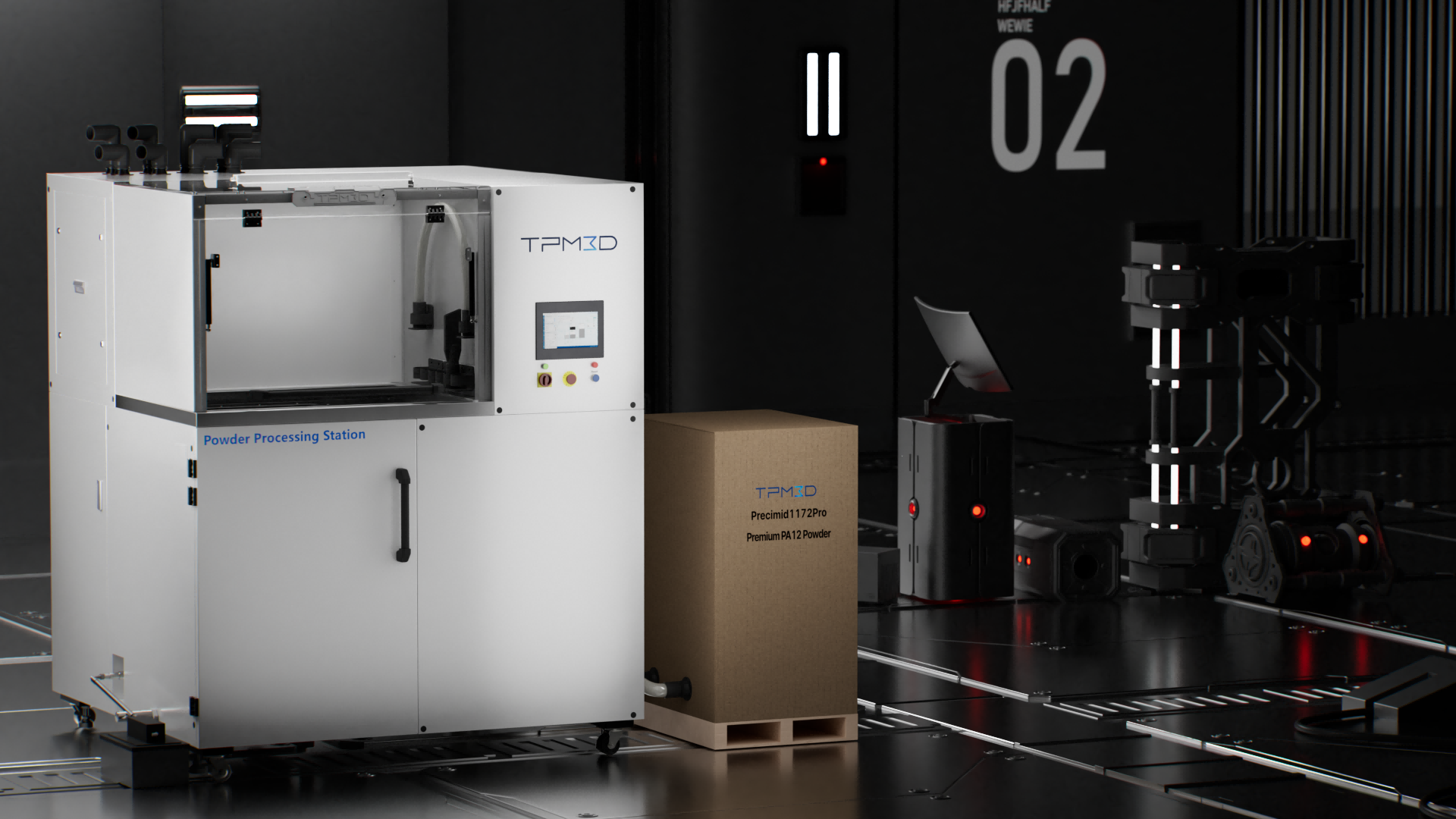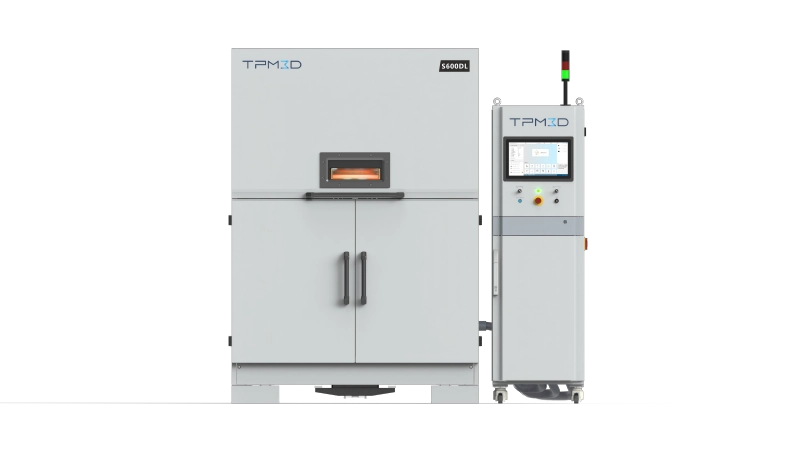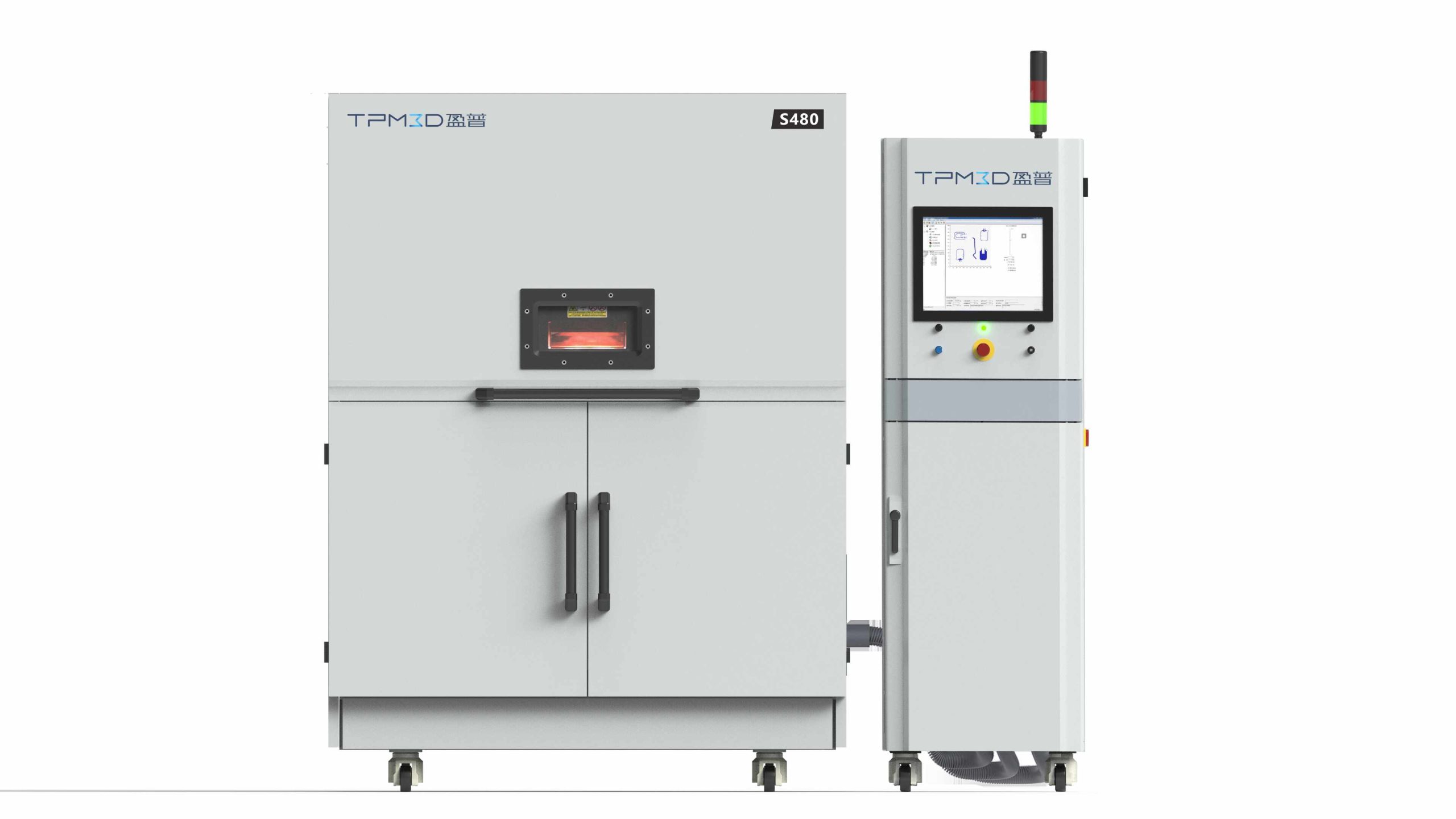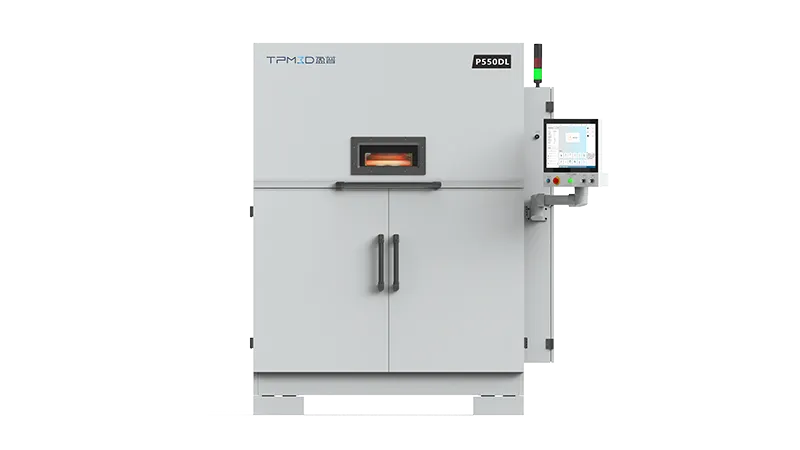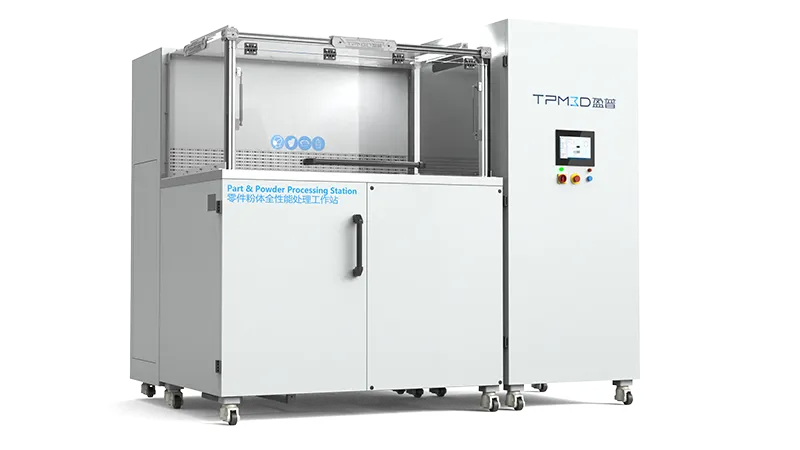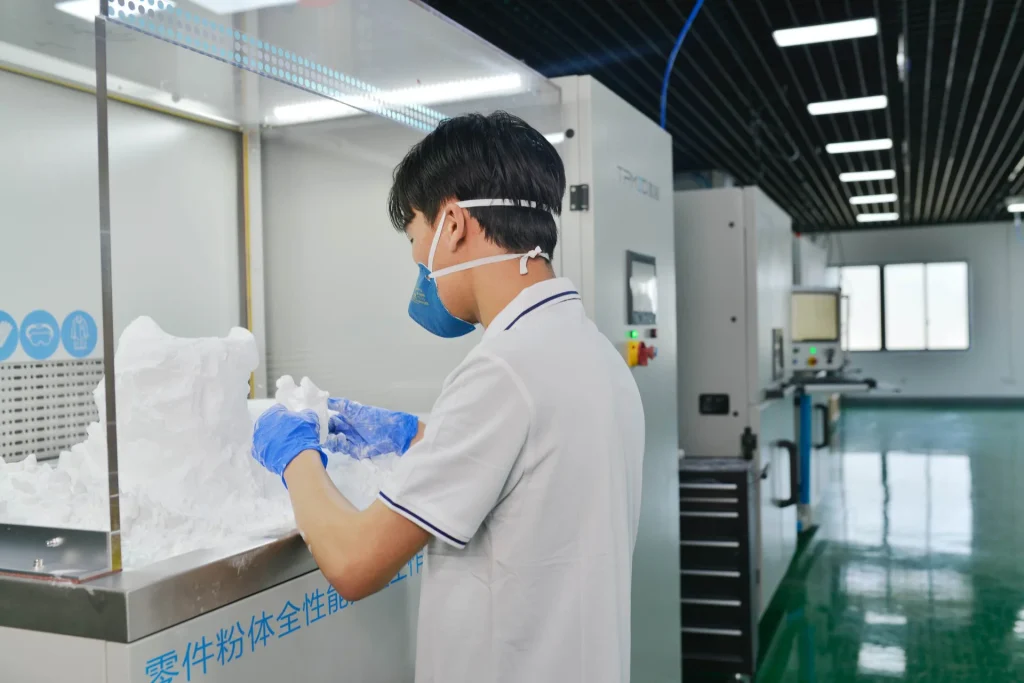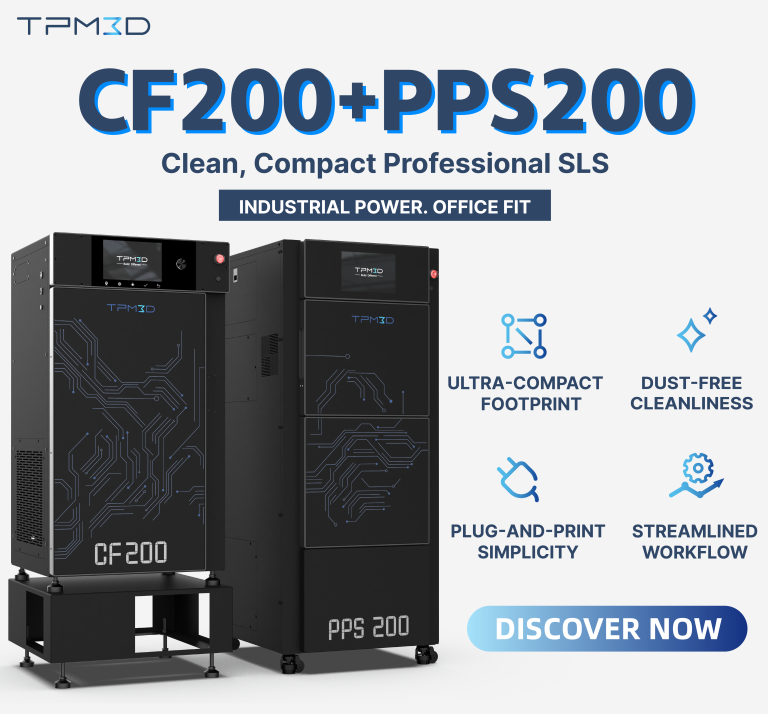Selective Laser Sintering (SLS) is one of the most advanced additive manufacturing technologies, widely used for producing functional prototypes and end-use parts. The process works by spreading a thin layer of powder onto the build platform, heating the powder bed to near its melting point, and then using a high-powered laser to selectively fuse particles according to the cross-section of the part. This process is repeated layer by layer until the full part is completed.
But what exactly determines the speed of SLS 3D printing? Several key factors play a role.
1. Laser Power and Scanning Speed
The most direct factor is the laser system.
-
Higher laser power allows the material to reach sintering temperature faster.
-
Multiple lasers working simultaneously can cover larger areas at once, significantly accelerating print times.
-
Scanning speed also matters—the faster the laser moves across the powder bed, the quicker each layer is fused.
For example, advanced SLS systems today can achieve scanning speeds of up to 22 m/s, greatly boosting production efficiency.
2. Size of the Build Cylinder
The build volume (or molding cylinder size) directly impacts throughput.
-
A larger build cylinder means more parts can be printed in a single batch.
-
This not only improves overall speed but also enables cost-effective mass production of small and medium-sized components.
For manufacturers, this translates into faster turnaround times and reduced per-part costs.
3. Printing Materials
Different powder materials also affect speed.
-
Some materials require higher laser energy or longer exposure times to achieve full sintering.
-
Others may need special atmospheric conditions (such as nitrogen), which can influence process efficiency.
Choosing the right material for the application and the machine’s capabilities is crucial for striking a balance between print speed and part quality.
Dual-Laser Systems from TPM3D
To meet industrial demand for both large-scale production and high efficiency, TPM3D has introduced dual-laser systems designed for speed and stability.
TPM3D P550DL
-
Build size: 550 × 550 × 850 mm
-
Dual 140W CO₂ lasers with a dynamic focusing scanning system
-
Scanning speed up to 22 m/s
-
Built-in nitrogen generator
-
Patented active cooling technology for faster cycle times
This system is well-suited for both large single parts and batch production of smaller components.
TPM3D S600DL
-
Build size: 600 × 600 × 800 mm (288L volume – one of the largest in the SLS industry)
-
Dual-laser system with balanced XYZ performance
-
Modular design with mechanical and electrical separation for easier maintenance
-
Certified to the highest EU safety standards (CE by TÜV Rheinland)
Compared to the P550DL, the S600DL offers a larger build volume, higher efficiency, and enhanced safety, making it ideal for heavy-duty industrial applications.
Conclusion
The speed of SLS 3D printing depends on a combination of laser power, scanning system, build cylinder size, and material properties. With innovations such as dual-laser setups and advanced cooling systems, modern SLS printers are pushing the limits of efficiency while maintaining reliability and part quality.
For manufacturers looking to scale production, TPM3D’s P550DL and S600DL offer powerful solutions that balance speed, size, and safety—helping companies achieve faster lead times and greater productivity.



